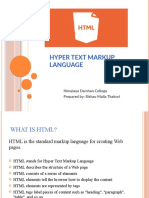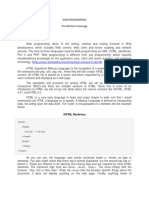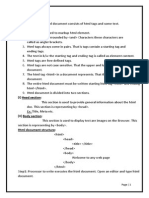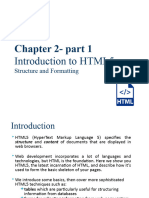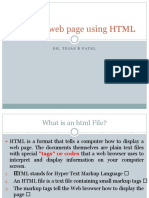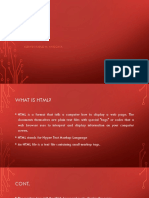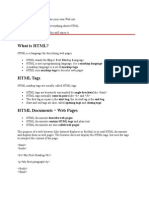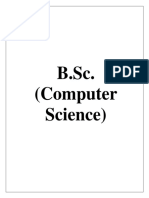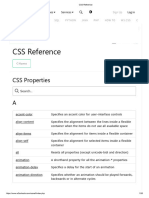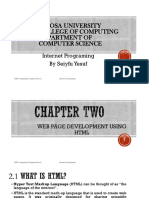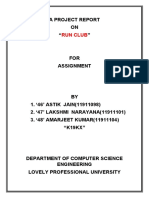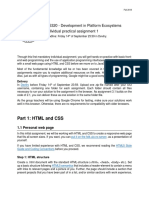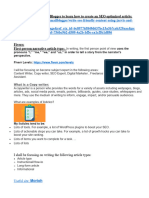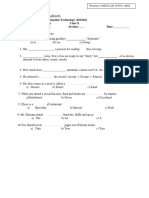0% found this document useful (0 votes)
65 views20 pagesHTML Notes
The document discusses HTML elements and tags used to structure web pages. It describes common elements like headings, paragraphs, lists, links, and tables. It also covers empty elements, block-level and inline elements.
Uploaded by
lolvir12Copyright
© © All Rights Reserved
We take content rights seriously. If you suspect this is your content, claim it here.
Available Formats
Download as PDF, TXT or read online on Scribd
0% found this document useful (0 votes)
65 views20 pagesHTML Notes
The document discusses HTML elements and tags used to structure web pages. It describes common elements like headings, paragraphs, lists, links, and tables. It also covers empty elements, block-level and inline elements.
Uploaded by
lolvir12Copyright
© © All Rights Reserved
We take content rights seriously. If you suspect this is your content, claim it here.
Available Formats
Download as PDF, TXT or read online on Scribd
/ 20













